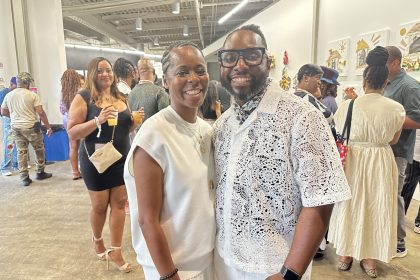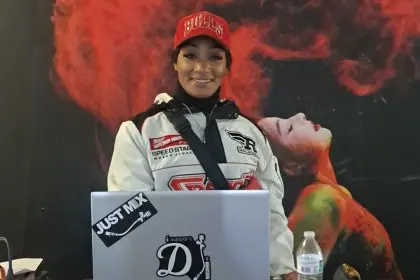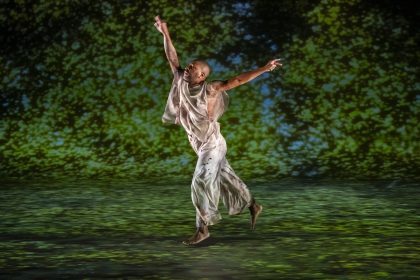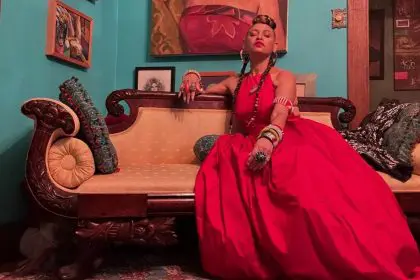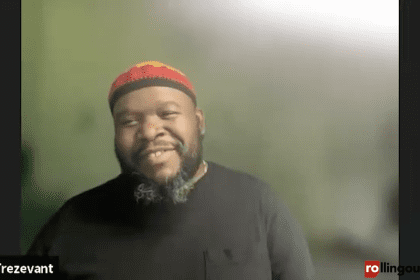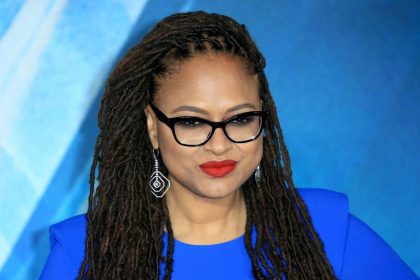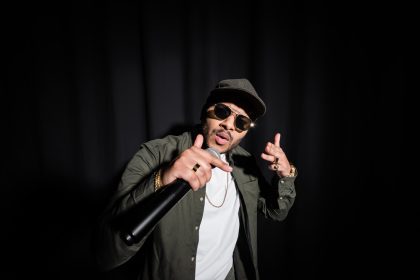
Journey through the three realms of the dead in The Divine Comedy exhibit at the Smithsonian’s National Museum of African Art in Washington, D.C. The exhibit, which opened on April 8 and runs through Nov 1, explores the allegorical epic poem written by Dante Alighieri, which took him 12 years to write and was completed in 1320. The audacious poem is an imaginative view of the afterlife and just like the poem, this exhibition breathes life into the three realms (hell, purgatory and heaven) and what they mean to artists from different parts of Africa.
Journey through the inferno (like Dante) as this part of the exhibit, Hell, asks, what are your fears? In your own personal hell, are you hot or cold? What does hell actually mean to you? Here, the art can be scary and menacing. From a boat filled with terror-stricken heads, to a painting of a stomach cut open releasing a stream of fire and smoke created from cotton. The most frightening piece seems to be a video of dancers cloaked in sheets (one black, one red, and one white) that seem to match the color scheme of Hell (black), Purgatory (red) and Heaven (white). The dancers move ghoulishly on the screen to eerie tribal music with a black backdrop and suspenseful camera work. The dark room of Hell ends with a video of clouds floating over a dark land and the sight of Purgatory. You have survived the depths of Hell.

Purgatory (the largest part of the exhibit), like that of the poem, is in between Heaven and Hell. Here, you climb your way from Hell exploring what Purgatory means to these artists. Such work like photographer Aida Muluneh’s depiction of identity, personal journey and family from The 99 series, immediately set the tone and is accompanied by photos of a desert with footprints, making one feel that they’re on an isolated excursion. As you climb the stairs more perspectives line the walls and upbeat African rap music fills the air, guiding you to the top like Dante’s Virgil, the Roman Poet. Aside from Muluneh’s photography, the most profound photos are that of Edson Chagas’ Oikonomos, Luanda series, where he poses with various plastic bags from around the world, over his head.


You’ve ascended through Purgatory and now enter Heaven. The theme here is very much focused on women and new life. The color of purity, white, is painted on the walls and bright lights illuminate this final part of the exhibit, giving you a sense of paradise. The conclusion to The Divine Comedy asks the viewer: What is your paradise? Upon entering a film prompts you to think “what is paradise for others?” This short film tells the story of a woman’s struggle from being mistreated and wearing a facade, to fighting and standing up for herself. Paintings of newborns line the wall and a giant metal sculpture welded into faces of women stands alone as the centerpiece in a separate room.

Many talented African artists have depicted their interpretations of each level through music, dance, photography, sculptures and paintings. This exhibit is a must see, because despite how they have interpret the realms, their art may make you feel and see something different, because as always, art is subjective.

